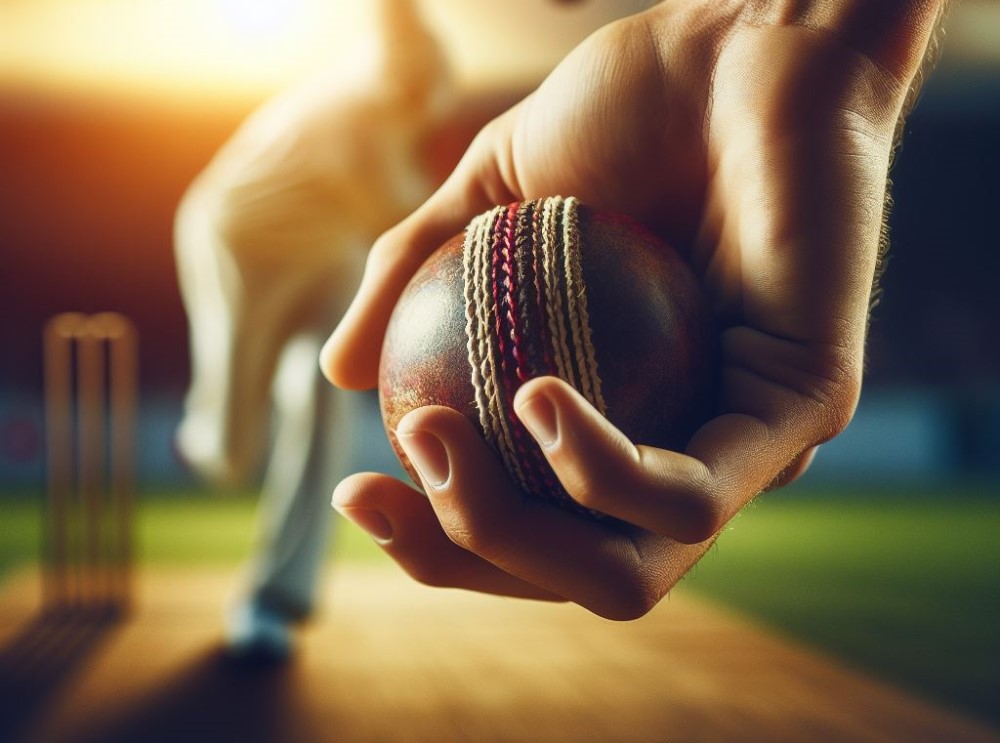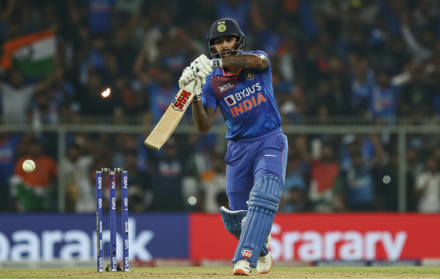
What Are The Different Bowling Actions In Cricket And Their Benefits
Cricket, a popular sport known for its diverse bowling techniques, requires skill, strategy, and precision. Understanding the different bowling actions in cricket and their respective benefits can greatly impact a bowler’s performance.
Different Types of Bowling Actions in Cricket and it’s Benefits

Each bowling action offers unique advantages and benefits, contributing to the overall effectiveness of a bowler. Let’s explore the benefits of these different bowling actions:
- Fast Bowling Action Benefits: The fast bowling action involves generating high ball speeds, which can intimidate batsmen and disrupt their timing. This action is ideal for delivering bouncers and yorkers, creating opportunities for wickets through pace and bounce.
- Medium Pace Bowling Action Benefits: The medium pace bowling action combines elements of both fast and spin bowling. It allows bowlers to vary their pace, making it difficult for batsmen to anticipate the delivery. Bowlers with medium pace actions can swing the ball and extract movement off the pitch, posing new challenges to the batsman.
- Swing Bowling Action Benefits: The swing bowling action focuses on generating movement in the air. Bowlers use subtle wrist and finger positions to make the ball deviate in flight, confusing the batsmen. Swing bowlers can swing the ball both ways, making it difficult for the batsman to judge the line and length of the delivery.
- Spin Bowling Action Benefits: The spin bowling action involves imparting spin on the ball, causing it to deviate after pitching. Spin bowlers can generate sharp turn and bounce, making it harder for batsmen to play their shots. Different types of spins, such as off-spin, leg-spin, and left-arm spin, provide variation and increase the chances of taking wickets.
When choosing a bowling action, several factors need to be considered:
- Natural Ability and Body Type: Bowlers should consider their natural abilities and body type, as different actions require specific physical attributes and strengths.
- Pitch and Weather Conditions: The playing surface and weather conditions can affect the behavior of the ball. Bowlers should choose an action that suits the pitch and weather to maximize their effectiveness.
- Game Situations and Tactics: The match situation and team tactics can influence the choice of bowling action. Bowlers need to adapt their actions to the game plan and the strengths and weaknesses of the opposition batsmen.
By understanding the different bowling actions in cricket and considering these factors, bowlers can optimize their performance and contribute significantly to their team’s success.
What Are the Different Bowling Actions in Cricket?

When it comes to cricket, understanding different bowling actions is key to mastering the game. In this section, we’ll take a closer look at the various bowling actions employed by cricketers.
From lightning-fast pace to graceful spin, each sub-section holds the secrets to a bowler’s success. So, get ready to explore the techniques, strategies, and benefits behind fast bowling, medium pace, swing bowling, and spin bowling actions. Let’s dive into the exhilarating world of cricket and unravel its bowling mysteries!
1. Fast Bowling Action
A fast bowling action in cricket requires speed, strength, and skill. Here are some steps to consider when mastering this fast bowling action technique:
- Develop proper body mechanics: Focus on a solid front foot plant, a strong back foot drive, and a smooth arm action.
- Work on your run-up: Build up speed with a well-controlled run-up, taking efficient strides.
- Master the release: Aim to release the ball at the optimal height and angle, maximizing the chances of achieving pace and bounce.
- Vary your deliveries: Incorporate different types of deliveries, such as the bouncer and the yorker, to keep the batsman guessing.
- Build strength and endurance: Engage in regular fitness training, including exercises that target your legs, core, and upper body.
- Analyze and learn from experienced fast bowlers: Observe and study the techniques and strategies used by successful fast bowlers.
By following these steps and continuously practicing, you can improve your fast bowling action and become a formidable force on the cricket pitch.
2. Medium Pace Bowling Action
- Medium Pace Bowling Action: Medium pace bowling action is a versatile style that combines elements of both fast bowling and spin bowling. Here are some steps to consider when performing a medium pace bowling action:
- Foot Placement: Start with a comfortable and balanced stance, with your front foot pointing towards the target.
- Grip: Hold the ball with a relaxed grip, placing your fingers along the seam for better control.
- Run-up: Use a controlled and smooth approach towards the crease, maintaining a consistent rhythm.
- Delivery Stride: Take a long and steady stride towards the batsman, ensuring proper alignment with the target.
- Release: As you reach the crease, shift your weight onto your front foot and release the ball with a fluid and smooth action.
- Variations: Develop different variations, such as cutters or slower balls, to keep the batsman guessing.
- Accuracy: Focus on hitting the right areas, targeting the off-stump or enticing the batsman into making a mistake.
- Control: Maintain control over your line and length, adjusting your pace and angles as needed.
- Field Placement: Work in tandem with your captain and teammates to set up the field strategically based on the delivery and game situation.
3. Swing Bowling Action
- A swing bowling action, also known as a swing ball action, is crucial in cricket as it allows the ball to move sideways in the air. Here are some steps to master the swing bowling action:
- Hold the ball with the shiny side facing towards the direction you want the ball to swing, which is one of the key elements of the swing bowling action.
- Keep your wrist straight and position your fingers to grip the seam in order to execute a successful swing bowling action.
- While running towards the crease, maintain a smooth and balanced approach to enhance your swing bowling action.
- As you release the ball, focus on generating maximum revolutions on it, an essential aspect of a powerful swing bowling action.
- Ensure a high arm release, allowing the ball to swing naturally in the air, making your swing bowling action more effective.
- Practice regularly to develop control and consistency in your swing bowling action, as mastery in this area requires patience and dedication.
Remember, mastering the swing bowling action requires patience and practice. Keep honing your skills to become an effective swing bowler on the cricket field. Good luck!
4. Spin Bowling Action
- The spin bowling action in cricket involves imparting spin to the ball using the fingers or wrist. Here are some key steps to consider when executing a spin bowling action:
- Grip: Hold the ball with your fingers across the seams, creating maximum friction when releasing the ball.
- Run-up: Build momentum with a smooth run-up, ensuring proper alignment with the target.
- Delivery stride: Maintain a balanced and controlled stride, focusing on a consistent release point.
- Wrist position: Adjust the wrist position to generate different types of spin, such as off-spin or leg-spin.
- Follow through: Complete the action with a fluid arm movement, allowing for maximum spin and accuracy.
To improve your spin bowling, practice regularly, analyze skilled spin bowlers, and experiment with variations. Remember, mastering the spin bowling action takes time and dedication. Keep honing your skills and enjoy the art of spin bowling!
Benefits and Advantages of Different Bowling Actions

Discover the unique advantages and benefits of different bowling actions in cricket. From fast bowling to swing, medium pace to spin, each style offers its own strengths on the pitch.
Unleash the power of speed and aggression with fast bowling, master the art of control and variation with medium pace, manipulate the ball’s movement with swing bowling, or spin your way to success with cunning spin attacks. Get ready to explore the secrets behind these bowling actions and learn how they can give you the edge in the game.
1. Fast Bowling Action Benefits
- Fast bowling action in cricket offers several benefits that can enhance a bowler’s performance on the field. Some key advantages of fast bowling action include:
- Speed: Fast bowlers can generate high speeds, making it challenging for batsmen to react and play their shots effectively.
- Variation: Bowlers with a fast bowling action can use variations like slower balls, bouncers, or yorkers to keep batsmen guessing and put pressure on them.
- Swing: A fast bowler with good control over swing can create movement in the air, making it even more difficult for batsmen to negotiate the deliveries.
- Aggression: The aggressive nature of fast bowling can intimidate batsmen and disrupt their rhythm, leading to wickets and increased team morale.
- Wicket-taking ability: Fast bowlers have a higher likelihood of taking wickets due to their ability to generate pace and cause discomfort for batsmen.
In history, the fast bowling action of legendary cricketers like Wasim Akram and Dennis Lillee showcased the impact and effectiveness of this style. Their skill and technique left a lasting legacy in the game and inspired future generations of fast bowlers.
2. Medium Pace Bowling Action Benefits
Medium pace bowling action in cricket offers several benefits for bowlers looking to strike a balance between speed and control.
- Variety: Medium pace bowlers have the flexibility to vary their pace, making it difficult for batsmen to settle and anticipate their deliveries.
- Swing: With the ability to generate swing, medium pace bowlers can trouble batsmen with late movement in the air, creating opportunities for wickets.
- Control: Medium pace bowlers are known for their ability to maintain line and length consistently, reducing the chances of giving away easy runs.
- Durability: Compared to fast bowlers, medium pacers can sustain their bowling spells for longer periods, making them valuable assets in longer formats of the game.
Pro-tip: To excel in medium pace bowling, focus on improving accuracy, mastering various types of swing, and developing a deceptive slower delivery.
Medium pace bowling action offers numerous advantages for bowlers aiming to achieve a harmonious blend of speed and control in cricket.
- Variety: Medium pace bowlers possess the flexibility to alter their pace, thereby making it challenging for batsmen to settle down and anticipate their deliveries.
- Swing: Through their ability to generate swing, medium pace bowlers can trouble batsmen with late movement in the air, leading to opportunities for taking wickets.
- Control: Medium pace bowlers are renowned for their consistency in maintaining line and length, minimizing the chances of conceding easy runs.
- Durability: In comparison to fast bowlers, medium pacers can sustain their bowling spells for longer durations, making them valuable assets in longer formats of the game.
Pro-tip: To excel in medium pace bowling, it is crucial to focus on enhancing accuracy, mastering various types of swing, and developing a deceptive slower delivery.
3. Swing Bowling Action Benefits
The swing bowling action in cricket offers several benefits for bowlers.
- Control: The swing action allows bowlers to have better control over the movement of the ball in the air, making it difficult for batsmen to predict the trajectory and adjust their shots accordingly.
- Variation: The ability to swing the ball both ways adds variety to a bowler’s repertoire, making it challenging for batsmen to read and play their deliveries.
- Wicket-taking potential: Bowling with swing can lead to wickets as it creates uncertainties for batsmen and increases the chances of edges, catches, or bowled dismissals.
- Reverse swing: Skilled bowlers can master the art of reverse swing, where the ball swings in the opposite direction after it gets old. This can be a potent weapon, especially in the later stages of the match.
Mastering the swing bowling action can significantly enhance a bowler’s effectiveness and contribute to their team’s success.
The swing bowling action benefits in cricket offer numerous advantages for bowlers.
- Control: The swing action grants bowlers greater control over the ball’s movement in the air, making it challenging for batsmen to anticipate the trajectory and adjust their shots accordingly.
- Variation: The capability to swing the ball in both directions adds diversity to a bowler’s arsenal, creating difficulties for batsmen when attempting to read and play their deliveries.
- Wicket-taking potential: Implementing swing in bowling can lead to wickets by creating uncertainties for batsmen and increasing the chances of edges, catches, or bowled dismissals.
- Reverse swing: Skillful bowlers can master the art of reverse swing, wherein the ball swings in the opposite direction once it becomes old. This can be a powerful weapon, particularly in the latter stages of a match.
Mastering the swing bowling action can significantly enhance a bowler’s effectiveness and contribute to their team’s success.
4. Spin Bowling Action Benefits
Spin bowling in cricket offers several benefits for bowlers. Here are some advantages of using a spin bowling action:
- Flight and Variations: Spin bowlers can incorporate the spin bowling action to impart flight, adding deception to their deliveries. This allows them to deceive batsmen and induce mistimed shots or wickets.
- Turning the Ball: Spinners, through their spin bowling action, can generate significant turn on the ball, making it challenging for batsmen to predict the direction of the spin. This can lead to wickets through edges or misjudgments.
- Control and Accuracy: Spin bowlers, who utilize spin bowling actions, often demonstrate better control and accuracy compared to fast bowlers. This enables them to place the ball in difficult areas, making it more challenging for batsmen to score runs.
- Lower Risk of Injury: By adopting spin bowling actions, bowlers can exert less strain on the body, reducing the risk of injuries compared to fast bowling. Spinners can, therefore, have longer careers and contribute consistently to the team.
By understanding the benefits of spin bowling actions, cricketers can choose a bowling style that suits their skills and team’s requirements.
Factors to Consider when Choosing a Bowling Action

When it comes to choosing a bowling action in cricket, several factors come into play. It’s not just about your natural ability and body type, but also the pitch and weather conditions you’ll be facing. And let’s not forget the game situations and tactics that can heavily influence your decision.
In this section, we’ll dive into these key considerations, helping you understand the various elements you should take into account when selecting your bowling action. So lace up your bowling shoes and let’s explore the factors that can make or break your performance on the cricket field.
1. Natural Ability and Body Type
Natural ability and body type are key factors in determining the most suitable bowling action in cricket. When choosing a bowling action, it is important to consider several factors related to natural ability and body type:
- Physical attributes: Take into account your height, strength, flexibility, and natural bowling arm when determining the most comfortable and effective bowling action.
- Bowling style: Analyze your natural bowling style, whether it is fast-paced, medium-paced, swing, or spin, to identify the bowling action that best aligns with your strengths.
- Biomechanics: Pay attention to your body’s biomechanics and natural muscle movements, as they can significantly impact the efficiency and effectiveness of a particular bowling action.
- Coaching and guidance: Seek advice from experienced coaches and bowling experts who can assess your natural ability and body type and provide guidance on suitable bowling actions.
Remember that finding the right bowling action may require time and experimentation. Practice and refine different actions to discover the one that maximizes your natural ability and allows you to achieve optimal performance on the cricket field. Enjoy exploring different variations and strive for continuous improvement in your bowling skills. Good luck!
2. Pitch and Weather Conditions
Pitch and weather conditions play a crucial role in determining the most effective bowling action in cricket. Different pitches, such as dry or green surfaces, and varying weather conditions, like windy or humid, can greatly impact the movement of the ball.
Bowlers need to adapt their actions accordingly to exploit these conditions. For both the pitch and weather conditions, it is essential for bowlers to consider these factors when choosing their bowling action in order to maximize their chances of success.
On dry pitches, a spin bowling action is favorable as it allows the bowler to grip and turn the ball effectively. The dry surface provides the perfect opportunity for spin bowlers to generate significant turn and trouble the batsman.
Conversely, on green surfaces and in windy conditions, a swing bowling action works well. The green surface and the wind help the bowler generate movement in the air and off the pitch, making it challenging for the batsman.
Weather conditions also come into play when determining the most suitable bowling action. Windy conditions aid swing bowlers in creating movement in the air, making it difficult for the batsman to predict the trajectory of the ball.
On the other hand, humid conditions can pose a challenge for spin bowlers as it becomes harder to grip and turn the ball effectively. These factors need to be carefully evaluated by the bowlers when deciding on their bowling action.
3. Game Situations and Tactics
When it comes to game situations and tactics in cricket, bowlers need to adapt their bowling actions accordingly. Here are some factors to consider:
- Assess the batting team’s strengths and weaknesses.
- Consider the match situation, such as the score and the number of overs remaining.
- Analyze the playing conditions, such as the pitch condition, weather, and lighting.
- Understand the game plan set by the captain and the team’s overall strategy.
- Stay alert to the batsman’s footwork, shot selection, and scoring areas.
- Vary the pace, line, and length of deliveries based on game situations.
- Use different variations and strategies to deceive the batsman.
- Collaborate with the captain and fielders to set up fielding positions and bowling plans.
By considering the game situations and tactics, bowlers can make smart decisions on their bowling actions to maximize their effectiveness and contribute to their team’s success.




